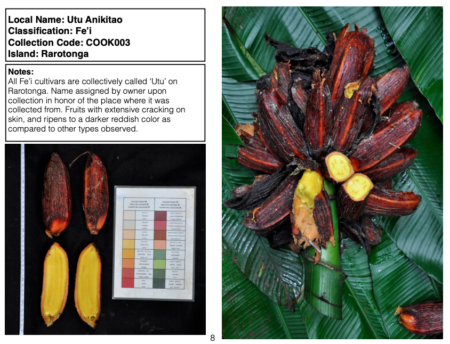- Whole-genome resequencing of 445 Lactuca accessions reveals the domestication history of cultivated lettuce. Originally domesticated in the Caucasus, for oil, and then a long, slow wander westward. But so much more to it…
- Variability and trait‐specific accessions for grain yield and nutritional traits in germplasm of little millet (Panicum sumatrense Roth. Ex. Roem. & Schult.). From 200 accessions to 5 both high yielding and rich in Ca.
- Genomic and phenotypic characterization of finger millet indicates a complex diversification history. Wait, East Africa is the least genetically diverse area?
- Portrait of a genus: the genetic diversity of Zea. There has been convergent adaptation in high altitude teosinte and high latitude (temperate) maize.
- Genetic diversity of African wild rice (Oryza longistaminata Chev. et Roehr) at the edge of its distribution. The Ethiopian material is special.
- Candidate genes and signatures of directional selection on fruit quality traits during apple domestication. Fruit colour and taste genes lose diversity during domestication.
- The Evolutionary History of Wild, Domesticated, and Feral Brassica oleracea (Brassicaceae). B. cretica is the closest wild relative.
- Brassica rapa domestication: untangling wild and feral forms and convergence of crop morphotypes. The truly wild stuff comes from the Caucasus, Siberia and … Italy. But it all goes back to turnips in the Hindu Kush.
- ‘Neodomesticates’ of the Himalayan allium spices (Allium species) in Uttarakhand, India and studies on eco-geography and morphology. Gotta know your onions.
- Multiple independent recombinations led to hermaphroditism in grapevine. The switch from dioecious to hermaphroditic flowers happened two times in the last 6000 years, but before domestication.
- Revitalization of the Greek Vitis database: a multimedia web-backed genetic database for germplasm management of Vitis resources in Greece. Welcome back!
- Participatory Plant Breeding and the Evolution of Landraces: A Case Study in the Organic Farms of the Collserola Natural Park. From 80 plants of the Mando tomato landrace to over 2000.
- Evidence for early dispersal of domestic sheep into Central Asia. Sheep were being kept in the Ferghana Valley 3000 years earlier than thought.
- A metric for spatially explicit contributions to science-based species targets. Sustainable crop production and forestry in Indonesia, Colombia, Mexico, Madagascar and Brazil would make a hell of a difference.
- Conserving intraspecific variation for nature’s contributions to people. Oh good, I’m glad somebody thought of this.
Nibbles: Evidence, Agroecology, Iconography, Cryo
- Educational materials for conservation.
- Seminar on agroecology next week by Professor of Agroecology Steve Gliessman.
- Why is there a citron in Van Eyck’s Ghent altarpiece?
- APPS Special Issue Call for Papers: “Meeting the Challenge of Exceptional Plant Conservation: Technologies and Approaches.”
More online genebank training
…MSBP’s popular Seed Conservation Techniques (SCT) training course will be running from the 11th to the 22nd of October 2021. Following the Partnership’s agreed Seed Conservation Standards, the course provides trainees with the knowledge needed to collect, conserve and manage high quality ex situ collections of wild plant seeds. Topics covered will include: planning a seed collection programme, assessing and collecting techniques, post-harvest handling, measuring seed moisture content, seed processing and quality assessment, and seed germination and dormancy. After a successful first online version was piloted last year, we will again offer a fully online 2-week training course with content provided online as a mixture of live sessions, pre-recorded training modules and practical exercises.
More info on the Kew website.
Yes we have banana catalogues
Great to hear that recent banana diversity collecting in my old stamping ground of the Pacific 1 has resulted in three beautiful germplasm catalogues:
- Rarotonga and Aitutaki, Cook Islands
- Upolu, Samoa
- West New Britain, Papua New Guinea

In due course, this material will end up in the Musa International Transit Centre and will be available for breeding, research and training under the SMTA of the Plant Treaty.
Nibbles: Plant book, Heirlooms, Vavilov, Breeding
- Amazing plant stories from Jon Drori.
- An amazing crop diversity stat from DW.
- Amazing botanist story.
- Kind of amazing this got published.